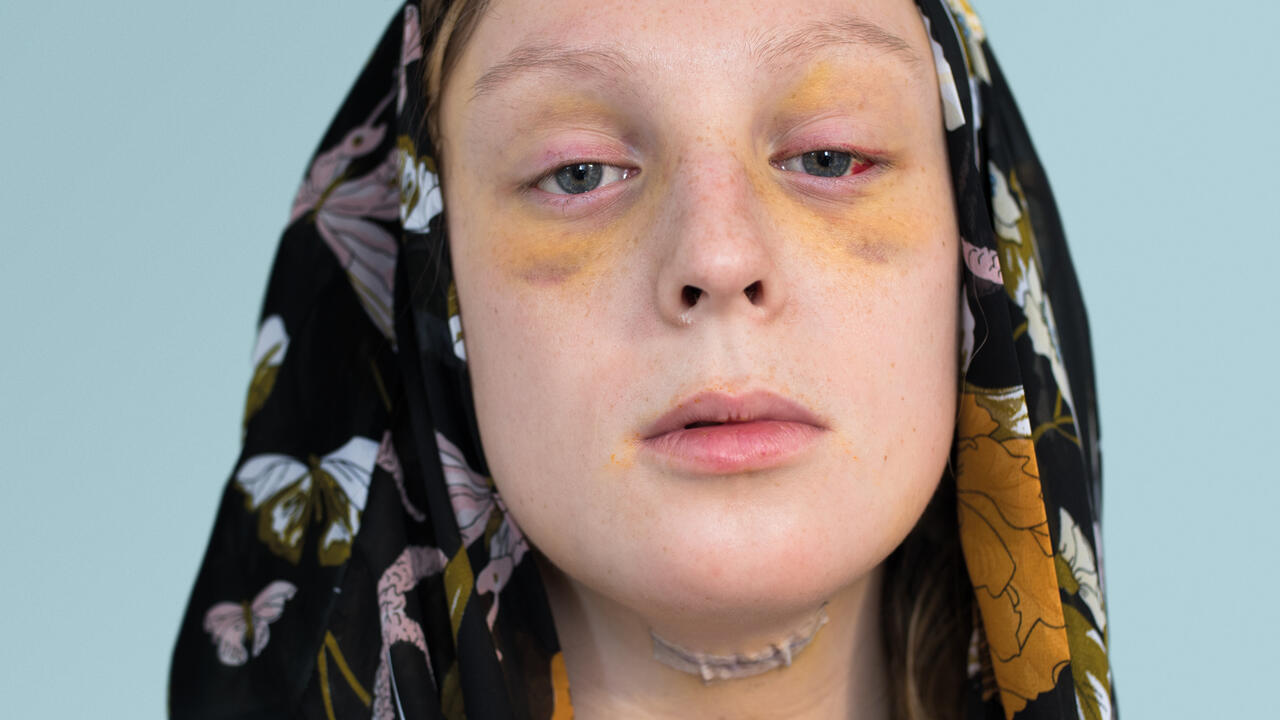The Best Shows in New York Right Now
From Gordon Parks’s stunning photographs of Black America to Patrick Angus’s intricate queer portraits, these are the must-see exhibitions to start the new year
From Gordon Parks’s stunning photographs of Black America to Patrick Angus’s intricate queer portraits, these are the must-see exhibitions to start the new year

Haim Steinbach
Tanya Bonakdar Gallery
14 January – 27 February 2021
Display #28 (rustic wall with music box and candle snuffer) (1991), a large wooden, cabin-like wall structure, sits diagonally on an axis across the entire main space at Tanya Bonakdar Gallery. The work’s façade is marked by a set of large cabinets, two of which include the tiniest of items: a candle snuffer and a ‘Blabbermouth’ transistor radio. First exhibited at Jay Gorney Modern Art, New York, in 1991, Display #28 remains one Haim Steinbach’s more recognized works – partly for its size but also for its sheer sentimentality. The Israeli-American artist has made a career of creating intricate and obscure compartments or ‘displays’ to house the most intimate objects. In the back gallery, Untitled (table with towels, bone, pacifier) (1993), a wood and MDF table at the centre of the room, presents an assortment of hotel towels that the artist kept and collected throughout his travels in Austria. Surrounding this work are three large, wall-mounted boxes – their surfaces painted ivory white – each with a pull-out drawer featuring a white folded handkerchief with an embroidered name on it: that of a past lover or friend perhaps, immortalized in these cool, minimalist chambers.

Gordon Parks
Jack Shainman Gallery
7 January – 20 February 2021
Gordon Parks’s images are visceral in their beauty and intensity, inciting such an array of emotions they can only be described as magic. His photographs not only bear witness to some of the most memorable and difficult moments in African American history, but also capture a kind of unmistakable aura of Blackness with such subtlety, ease and imagination it transcends the medium itself. ‘Gordon Parks: Half and the Whole’, on view at Jack Shainman Gallery, not only reminds us of the photographer’s immense talent and breadth of output, but how relevant his pictures are today. In addition to some of his most iconic portraits of civil rights leaders, including Malcolm X and Eldridge and Kathleen Cleaver, the exhibition features examples of his ‘Invisible Man’ and ‘Segregation Story’ series: a collection of candid colour photographs of Black life in 1950s America. This show is also bookended by MoMA’s recent rehang of their permanent collection, which includes a gallery dedicated to ‘The Atmosphere of Crime’, Parks’s 1957 photo essay in Life magazine documenting the prison system and policing in underserved communities.

Jesse Wine
Simone Subal Gallery
19 November 2020 – 30 January 2021
The strange, amorphous sculptures of Jesse Wine take centre stage in this small Chinatown gallery space. The exhibition, ‘The Players’, takes the form of David Lynch’s 'waiting room’ in Twin Peaks (1990–91; 2017): an extra-dimensional maze of long red velvet curtains. Wine's plush, velvety canvas curtains – here in bright orange and royal blue – frame his ceramic works like a cast of characters in a dark-comedy display. I was left with a pleasant feeling of unease.

Tourmaline
Chapter NY
14 December 2020 – 31 January 2021
‘Tourmaline’s dream-like renderings of queer and trans ancestors on film reach back in time in order to divine the future, disrupting linear notions of history’, writes Muna Mire in their profile of the artist for frieze. Tourmaline’s first solo exhibition, ‘Pleasure Garden’, at Chapter NY’s temporary outpost on Madison Street in Chinatown, continues in this tradition of furthering counternarratives around the histories of Black trans and queer communities. In addition to Salacia (2019) – Tourmaline’s 6-minute film on the fictionalized figure Mary Jones, a black trans, sex worker in 1830s New York – the exhibition presents a suite of self-portraits inspired by Victorian-era pornography and the Black-owned pleasure gardens of Lower Manhattan in the 1820s. In these photographs, Tourmaline reimagines what these gardens might look like through the lens of a Black trans futurity.

‘Escapism’
Meredith Rosen Gallery
5 December 2020 – 30 January 2021
Tucked away in a basement just steps from the Metropolitan Museum of Art, this group show at Meredith Rosen Gallery presents a variety of works that attempt, in the words of Italo Calvino from If on a Winter’s Night a Traveler (1981), as quoted in the press release, to ‘erase the consequences of certain events and restore an initial condition’. There's an oddly nostalgic quality to the exhibition, as if entering a lair of postinternet whimsy – a perfect getaway from our current condition. ‘Escapism’ features work from artists Donald Baechler, Frank Benson, Sebastian Black, Tina Braegger, Susan Chen, COBRA, Ryan Driscoll, Olivia Erlanger, Theo Triantafyllidis and many others.

Patrick Angus
Bortolami Gallery
15 January – 27 February 2021
This beautiful exhibition features three paintings and selected works on paper that span Patrick Angus's entire career up until his death from AIDS in 1992. The gallery walls are peppered with small, intimate portraits of men lounging or sleeping on couches, beds, and chairs – both nude and clothed – with a great economy of detail. Inspired by the early works of David Hockney, Angus’s drawings are simple and precise, exemplifying a very loose style and, at times, colourful palette. The works on paper – straightforward vignettes of masculinity – stand in contrast to his larger oil paintings that show scenes from gay theatres in New York’s Times Square of the 1980s. These gloriously raunchy depictions of gay sexuality take on a more playful tone when seen alongside the gravitas of Angus’s watercolour and coloured-pencil portraits.

Jack Pierson
Kerry Schuss Gallery
1 December 2020 – 13 February 2021
The first thing that comes to mind when I think of Jack Pierson is, of course, his ‘Word Pieces’– text-based sculptures made from found objects – and Tomorrow’s Man, his magazine series that acts as both queer photo book and a platform to highlight the work of other emerging artists. I was a bit surprised, then, to see his more recent abstract, assemblage pieces that make up the entirety of his new solo show at Kerry Schuss Gallery. ‘Five New Pieces’ features work that Pierson made during last year's lockdown, created from mostly discarded materials: everyday things in this studio, such as branded cardboard boxes, sheets of plastics, and assorted fabrics. These works are essentially collaged together – not unlike the scraps of images that make upTomorrow’s Man – each individual piece of detritus nailed to the surface of the gallery walls and arranged like Tetris blocks. The tableaux are infuriatingly plain and yet absolutely satisfying to look at – recalling, to me, some of Rodney McMillian’s earlier ‘Landscape Paintings’ on bedsheets – an elegant balance between shape and colour.
























